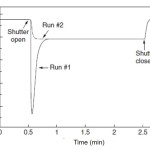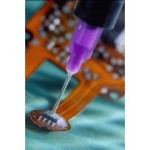Companies with a successful innovation track record typically have a well developed business strategy. When the organization knows “where it needs to go” then portfolio discussions for new products is much easier. So what are some of the elements of new product strategies? Let’s take a look at some: Defending versus extending current product base ... [Click to Continue...]
New Product Portfolio Analysis: Selecting the Right Projects Part 1
Everyone knows that new products are the lifeblood of growing companies. Most people associate innovation with new products which for the most part is correct. There are also process innovations and business model innovation, but in the next series of posts, we will focus on new product innovation. The question is, how do you figure out what new products to develop? Most ... [Click to Continue...]
UC Curing of Thermosets Part 16: Using UV DSC to Monitor Curing – 3
UV DSC provides a convenient and accurate method to investigate UV curing of thermosets. With careful attention to experimental details (see previous post for more information), insights into the photoinitiated curing of thermosets can be obtained. This post provides some examples of how UV DSC can be used to characterize UV cured thermosets. In the first example the UV curing ... [Click to Continue...]
UV Curing of Thermosets Part 15: Using UV DSC to Monitor Curing – 2
In the previous post the UV DSC experimental set-up was described for several commercially available UV DSC systems. Image on the left courtesy of Perkin Elmer. The DSC cell design makes if very easy to irradiate a sample in a DSC pan and also determine the accurate baseline to enable quantitative measurements of the heat of reaction during UV curing. Let’s first discuss ... [Click to Continue...]
UV Curing of Thermosets Part 14: Using UV DSC to Monitor Curing – 1
In the last few posts, the utility of using a rheometer with a UV exposure accessory was discussed. The UV rheometer method is very useful for measuring the physical changes during UV exposure, such as how the dynamic loss and storage moduli changed during UV curing. Monitoring the viscosity as a function of time for various UV exposure doses has important practical uses as ... [Click to Continue...]





